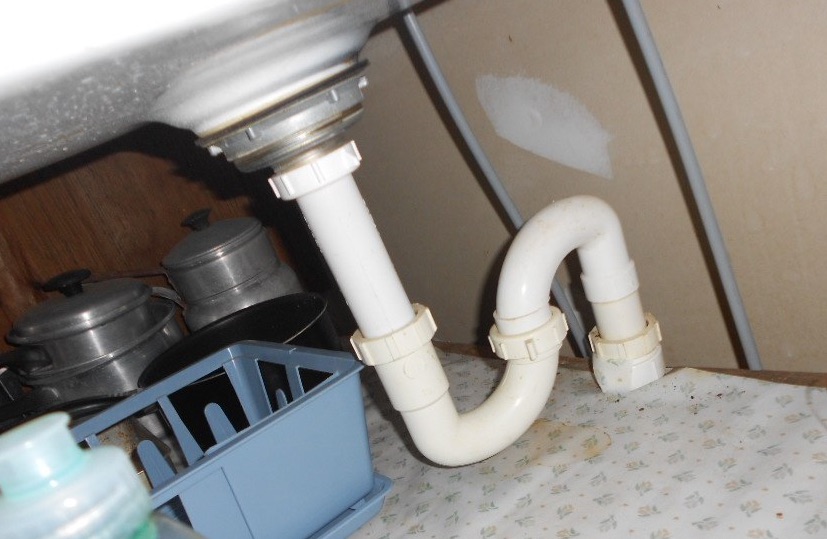The Necessity of Proper Ventilation in Home Plumbing Systems
The Necessity of Proper Ventilation in Home Plumbing Systems
Blog Article
The article author is making several good points relating to Why Plumbing Air Vents Are Important in general in this article down the page.

Appropriate ventilation in pipes systems is often forgotten, yet it is crucial for maintaining the capability and safety and security of your home's pipes. Ventilation helps regulate atmospheric pressure, protect against the buildup of unsafe gases, and ensure the reliable removal of waste. In this overview, we will check out the value of appropriate pipes air flow, just how it works, and the benefits it offers your pipes system.
Exactly How Ventilation Functions in Pipes Solutions
Air Pressure Regulation
Appropriate ventilation maintains balanced atmospheric pressure within the plumbing system. When water moves with pipelines, it displaces air. Without adequate air flow, this variation can develop unfavorable stress, bring about reduce drains or siphoning of water from catches, which can create unpleasant smells to leak right into the home.
Preventing Drain Gas Buildup
Among the most important features of plumbing vents is to stop sewer gases, such as methane and hydrogen sulfide, from building up within the home. These gases can present significant health risks and are highly flammable. Vent pipes enable these gases to run away securely outdoors.
Assisting in Waste Elimination
Air flow aids in the efficient elimination of wastewater by protecting against airlocks in the water drainage system. When air can move openly through the vents, it permits water and waste to stream smoothly with the pipes, decreasing the danger of clogs and back-ups.
Benefits of Appropriate Ventilation
Boosted System Effectiveness
Correctly aerated plumbing systems run extra effectively, with less clogs, faster draining pipes, and less pressure on the pipelines. This efficiency prolongs the life expectancy of the pipes system.
Improved Air Top Quality
By stopping sewer gases from entering your home, correct ventilation adds to far better indoor air top quality, making your living setting healthier and much more comfy.
Preventing Water Damage
Ample ventilation helps protect against water from being siphoned out of traps, which can result in drain gases going into the home and causing water damage gradually.
Steps to Make Sure Correct Ventilation
Consulting Plumbing Codes
Constantly speak with regional plumbing codes when creating or customizing your plumbing system. These codes provide the essential guidelines for proper airing vent and ensure your system fulfills safety standards.
Regular Assessment and Upkeep
Regular inspections can assist determine potential air flow issues prior to they end up being significant troubles. Upkeep tasks, such as cleaning vent pipes and checking for blockages, are necessary for keeping the system in good working order.
Specialist Installment
For brand-new installations or significant modifications, it's wise to employ an expert plumber. They have the know-how to ensure the air flow system is properly developed and set up according to code.
Comprehending Ventilation in Plumbing
Ventilation in plumbing refers to the network of pipelines that enable air to move via the drain system. These vents offer numerous functions, including managing atmospheric pressure within the pipes, avoiding sewer gases from getting in the home, and helping in the smooth circulation of wastewater.
Kinds Of Plumbing Vents
Key Stack Vent
The main stack vent, also called the air vent stack, is the main air vent in a plumbing system. It extends from the main drainpipe line up with the roof, enabling gases to leave and fresh air to enter the system.
Branch Vent
Branch vents link to the major pile vent and offer individual fixtures, such as sinks, commodes, and showers. These vents ensure that each fixture has adequate ventilation to function appropriately.
Air Admittance Valve (AAV).
An Air Admittance Valve (AAV) is a one-way valve that allows air to enter the pipes system without the demand for a traditional vent pipe prolonging with the roofing system. AAVs are frequently utilized in remodellings or areas where installing a conventional vent is impractical.
Indicators of Poor Ventilation in Plumbing.
Slow Draining Fixtures.
If your sinks, tubs, or toilets are draining gradually, it could be a sign of bad ventilation. Poor air circulation can create a vacuum cleaner impact, making it difficult for water to drain properly.
Gurgling Appears.
Gurgling sounds coming from drains are often an outcome of air being drawn via water traps as a result of adverse pressure in the pipes. This is a clear indicator of not enough ventilation.
Unpleasant Smells.
Sewer smells inside your home are a red flag that your pipes system is not appropriately aerated. This can imply that drain gases are not being sufficiently vented outside, causing possibly hazardous problems.
Common Ventilation Blunders.
Inadequate Vent Sizing.
Making use of undersized air vent pipelines can cause inadequate air circulation and pressure imbalances in the system. It's necessary to make use of vents that meet the specific demands of your plumbing system.
Improper Vent Positioning.
Placing vents too much from the components they offer can reduce their performance. Correct placement makes certain that air can flow easily and successfully through the system.
Disregarding Code Needs.
Building ordinance give particular standards for pipes ventilation. Disregarding these codes can cause a system that stops working to work correctly and might lead to expensive fixings or health hazards.
Final thought.
Correct air flow is a crucial component of any type of plumbing system, making sure that it operates effectively and safely. By recognizing the importance of air flow, identifying the indications of poor ventilation, and taking actions to maintain your system, you can protect against pricey concerns and protect your home's air high quality.
4 Things You Should Know About Your Plumbing Vents
What Plumbing Vents Are
Also called a vent stack, a plumbing vent is a vertical pipe attached to your drain line that runs through your roof. The plumbing vent pipe, or plumbing air vent, removes gas and odors from your plumbing system and allows fresh air to enter the pipes, helping the water to flow out of the drain pipes.
What Plumbing Vents Do
Plumbing vents have two basic functions. One of which is to allow unpleasant smelling wastewater and sewer gasses to escape your plumbing system instead of entering your home. Plumbing vent pipes are typically located on roofs, away from windows, to ensure the fumes exit the home completely.
The other function of the plumbing vent is to move fresh air into your plumbing system. This helps move water through every plumbing fixture in your house, like toilets and sink drains. Think of the way in which you need to let a little air into the bottle as you pour soda in order to make the drink flow smoothly.
Different Types of Plumbing Vents
True vent: This is the most common vent option. In simplest terms, a true vent is a vertical pipe attached to your drain line that exits through the roof. They often function as the main vent that other fixtures can connect to. Re-vent pipe or auxiliary vent: Attached to the drain line near specific plumbing fixtures, re-vent pipes run up and over to connect to the main vent. Common vent: Two plumbing fixtures installed on opposite sides of a wall are typically tied into the vent stack using something known as a sanitary cross. Wet vent: This venting option operates as a drain pipe and a vent at the same time. Wet vent drainage systems drain water from one fixture while venting the air from another. Although they’ve been used for over 100 years, wet vent systems have only recently been added to the plumbing code in many areas. If you’re planning on installing one in a bathroom remodel, make sure you check your local code prior to construction. Loop vent: For free-standing fixtures like kitchen island sinks, loop vents are ideal. These vent pipes run under the floor, rise from the P-trap, and create a loop inside the cabinet sink. Air admittance valve: An AAV is a one-way mechanical valve typically installed at the site of the plumbing fixture. AAVs allow venting to occur without having to tie into a larger venting system. They’re ideal for venting fixtures where you aren’t able to easily connect to an existing vent system. Common Plumbing Vent Issues
Although vent pipes typically don’t have water flowing through them, they’re still subject to many typical plumbing issues. For example, clogs are one of the most common problems associated with sewer vent pipes. If your vent pipe gets clogged, all of your plumbing fixtures tied into the vent stack will be affected.
A sink with a slow drain that bubbles and gurgles or a strong sewage smell around your toilet are both indicators that your toilet vent pipe is clogged. Because most vent pipes exit through the roof, old leaves, twigs or even a bird’s nest could be clogging the pipe.
Clogs in your vent pipe system cause a buildup of negative pressure, meaning that water won’t be able to flow out of your home very well. It’s similar to putting your finger over the opening of a straw to trap water inside. When you remove your finger, the water is able to flow out of the straw.
If you suspect you have any blockage in your vent, make sure you have a professional come examine the situation. Left unchecked, a blocked air vent can lead to other costly repairs, like leaks and sediment buildup.
Under Pressure
Pipe vents are essential aspects of a home’s plumbing system. Owning a home means learning about all sorts of things you never put much thought into before. But by understanding as much as you can about the important systems of your home, you can keep those budgets intact and those anxiety levels low.
https://www.homeserve.com/en-us/blog/home-improvement/plumbing-vents/

Do you like reading up on Essential Plumbing Vent Pipes: Understanding Their Role? Create a short review down the page. We will be pleased to listen to your insights about this posting. We hope that you come back again in the near future. Please take the time to distribute this blog entry if you liked it. Thanks for your time. Kindly check up our website back soon.
Book Today! Report this page